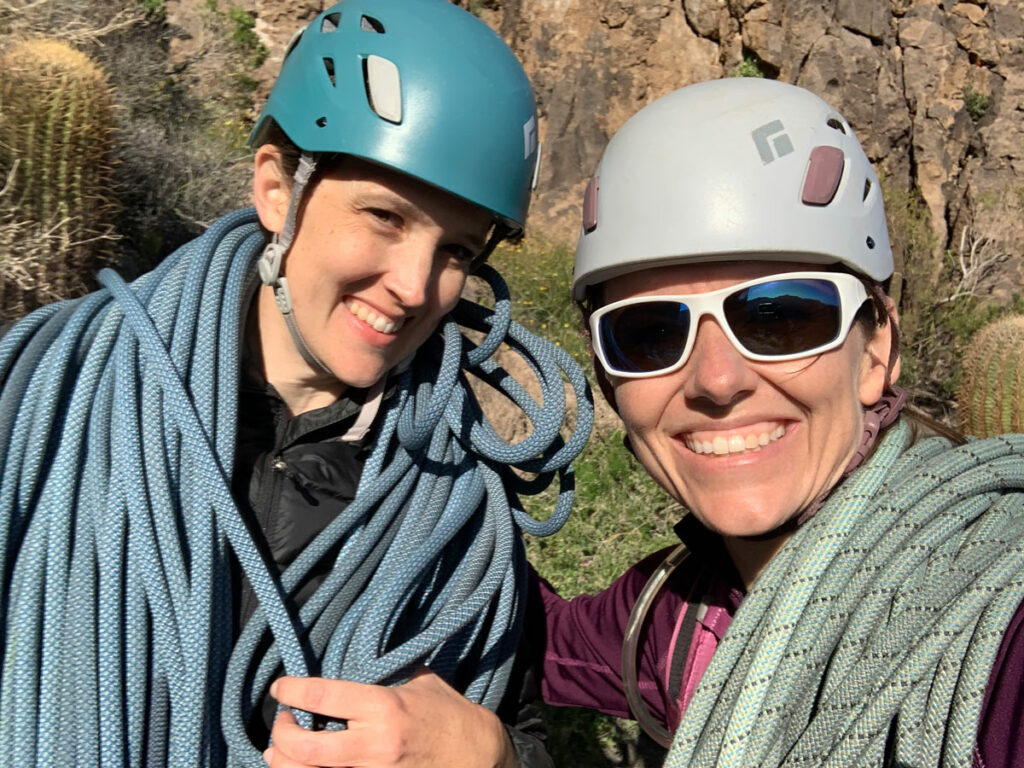
Best Canyoneering Ropes
After researching pretty much every static canyoneering rope I could find, I came up with three that topped my list. It’s important to point out that I have actually used all three of these ropes in a canyoneering setting. One is my old rope, one is my friend’s rope, and one is my new rope, so I have a feel for how these three perform in the real world.
What makes a good canyoneering rope?
There are a lot of characteristics that make one rope a little better than another, but these are the three main qualities I always look for in a canyoneering rope.
Static (not stretchy) A climbing rope needs to be dynamic (able to elongate or stretch) so as to be able to absorb the energy of a fall. The exact opposite is desirable with a canyoneering rope. Because you always begin at the top of a rappel and descend to the bottom of the rope, you want a rope that is static, which means it doesn’t have much stretch. Many canyons have running water, and wet ropes get even more stretchy, as anyone can attest who’s used a climbing rope to rappel down a waterfall. It bounces, and it doesn’t give you that secure feeling you like when you’re on rope.
Water Resistant Many technical canyons have water running through them, so canyoneering ropes will get wet. When a rope is wet, it usually becomes more stretchy and heavier. No bueno. Some rope materials, like nylon, naturally absorb water more than others, so it’s good to choose a rope that is made out of a less absorbent material. Some ropes are also treated to make them more water resistant, but these treatments do wear off over time and need to be renewed.
Lightweight Canyoneering often involves long hikes, and every ounce counts. Some materials are heavier than others.
Top picks
Although no rope is perfect, once you know what matters most to you, you can find one that best meets your personal preferences. These three ropes deliver a good blend of weight, material, and price.
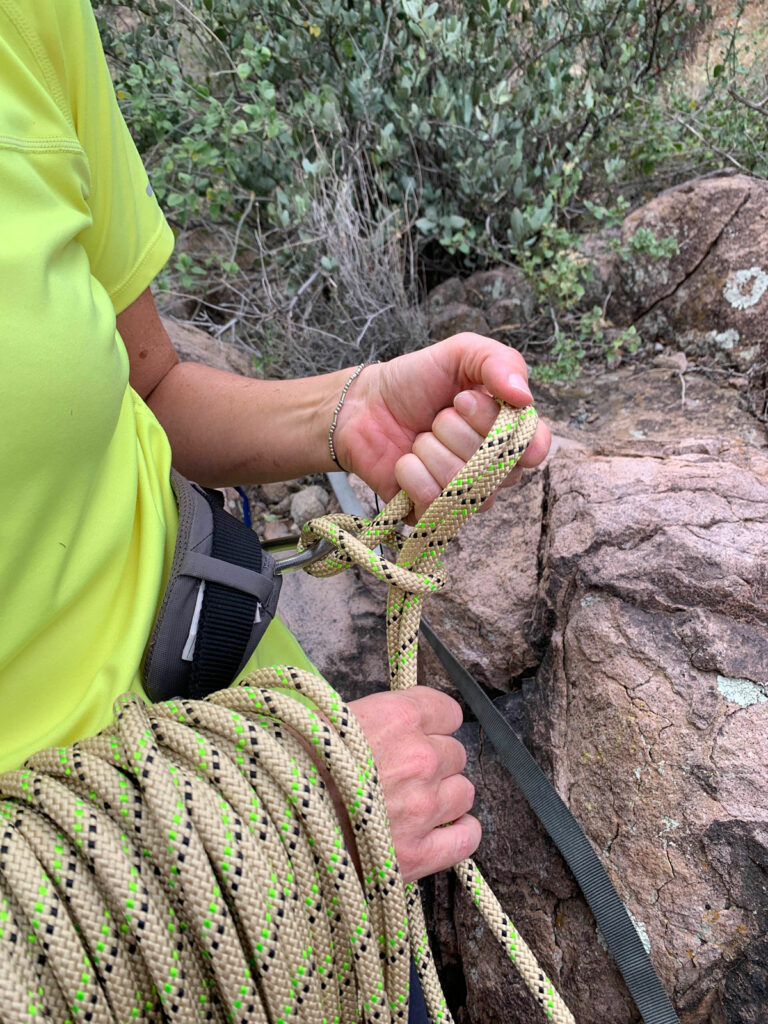
Sterling C-IV
According to the Sterling website, this rope was designed specifically with wet canyons in mind. One of the cool features about this rope is that it floats because its core is made of polypropylene. The Technora sheath is supposedly very resistant to abrasion, a key feature because canyoneering ropes go through a lot, especially during the pull.
I bought this rope about four months ago, so I haven’t used it on any wet canyons yet, but I have used it on several dry ones. The first thing we noticed is it raps faster than my old rope, which is a good thing for me. Even though the Canyon Prime is a little thinner, I feel like they rap about the same as far as speed.
4/19/22 UPDATE This rope does NOT float! The description said “polypropylene core floats” but it easily sank today in a wet canyon. Bummer.
Technical Specs
Diameter 9.0mm
Core Polypropylene
Sheath Technora
Weight 46.9 grams/meter
Elongation 2%
Pros
Light and small This is by far the smallest, lightest rope on this list, and I can really tell the difference when carrying it
Fast This might not be a pro for a beginning canyoneer, but it’s a pro in my book. Rappels are smooth and fast
Pliable This rope is pretty easy to get into the rappel device, even with gloves on or cold hands
Durable So far, it’s held up especially well
Cons
Color The color leaves much to be desired. It starts out bad and quickly goes to worse as it gets dirty so quickly
Hot The first time I used it on a single strand rappel, I had to rappel pretty slowly to keep from burning my brake hand
Elongation The technical specs show it elongates more than the other ropes on this list
Price This is the most expensive rope on this list
Sterling Canyon Prime
I promise, I have no affiliation with Sterling! I can’t help it if they make great ropes! According to their website, this rope is set at a lower price point to help people just getting into the sport. They also say it’s water resistant, although it doesn’t specifically say it has been treated, so they are probably referring to the fact that its polyester construction makes it naturally more water resistant.
This rope is my friend’s rope. It’s a tad skinnier and lighter than the Blue Water Canyonator , but heavier than the C-IV. I have noticed more wear on the sheath than the other ropes, but it’s been through plenty of canyons at this point. One thing we love about it is that it is super pliable, unlike the Canyonator, and therefore easy to get into the rappelling device even when you’re wearing gloves or have cold hands.
Technical Specs
Diameter 8.5mm
Core Polyester
Sheath Polyester
Weight 56.4 grams/meter
Elongation 1.65%
Pros
Fast This rope’s skinny diameter makes rappels quick
Pliable This rope is pretty easy to get into the rappel device, even with gloves on or cold hands
Price This is the cheapest rope on this list
Cons
Durability This rope seems not quite as durable as the other ropes on this list, but it’s still good
Diameter This is the skinniest rope on the list, and some canyoneers may not be comfortable with that

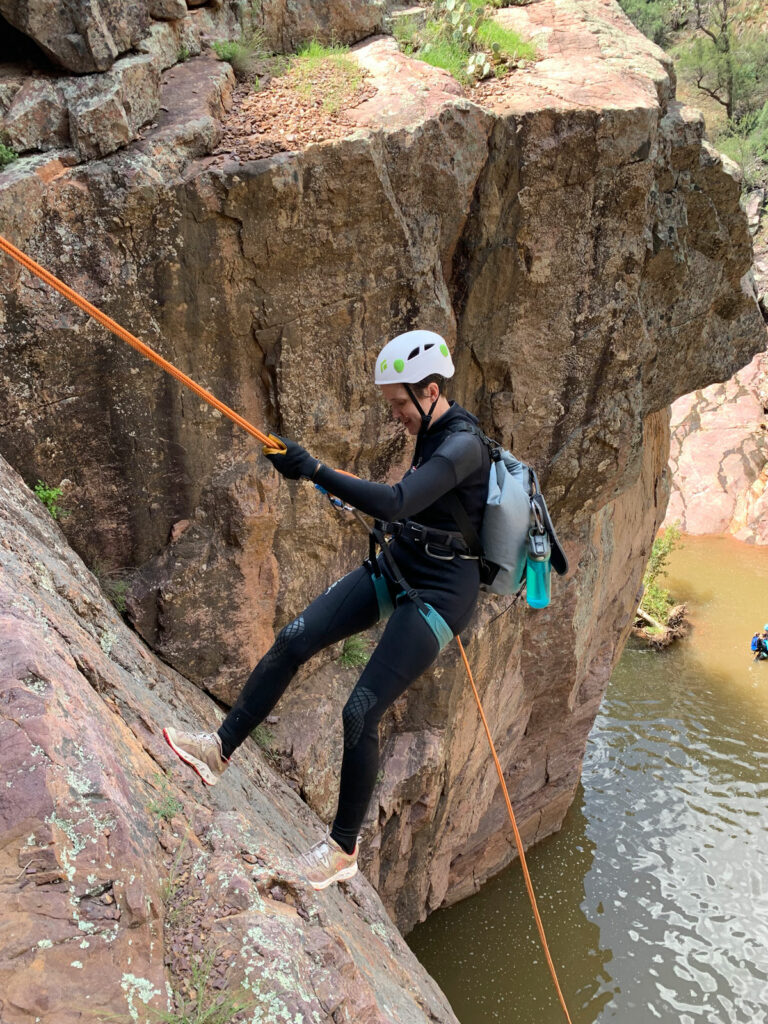
Blue Water Canyonator
The Blue Water Canyonator is my old rope, and I have many fond memories with it. The reason I bought this rope in the first place is because it’s made of polyester, which makes it water resistant, and it’s low stretch. Now, there’s one other reason I love this rope, and I’m just going to apologize in advance for boring the guys for a second, but it’s a beautiful rope! I absolutely love the bright colors. I have the orange one, and it hasn’t really faded much despite everything it’s been through.
The reason I went researching other ropes when it came to buy a new one is that I wondered if I could find one that is made of a different material that would make it lighter and less stiff. My friends are always complaining about not being able to get it into the rappelling device, which also means it’s kind of difficult to flake and stuff compared to the other ropes. However, I still believe it’s a solid choice.
Technical Specs
Diameter 9.0mm
Core Polyester
Sheath Polyester
Weight 62 grams/meter
Elongation 1.28%
Pros
Low elongation This is the least stretchy rope on the list
Color This rope looks awesome in pictures! The color doesn’t seem to dull much over time
Length For whatever reason, this rope comes in a 65m length, so you get a few extra feet over the typical 61m rope
Cons
Weight This is the heaviest rope on the list
Stiff The stiffness of this rope makes it harder to put into the rappel device compared to the others on this list

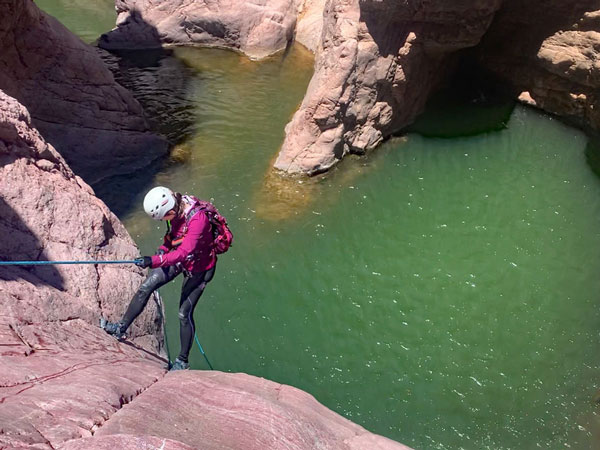
Leave a Reply